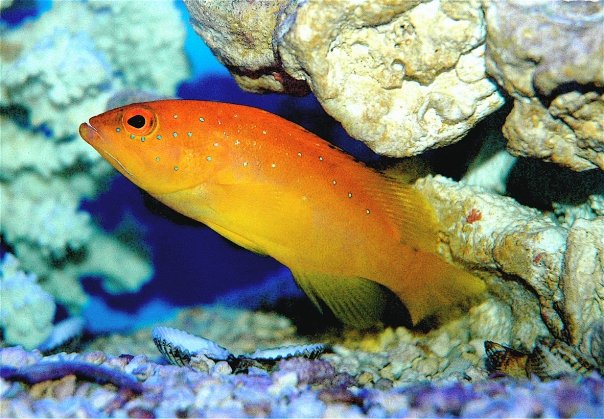Archives
Coney Grouper Golden Morph
(Cephalopholis fulva)
The Coney Grouper, or Cephalopholis fulva, is a colorful species of grouper commonly found in the Atlantic Ocean, particularly around the Caribbean Sea, Gulf of Mexico, and the Bahamas. This small grouper typically measures up to 16 inches (about 40 cm) in length and displays vibrant colors, varying from red to yellow, often with blue spots around the eyes and body.
Here are some interesting facts about the Coney Grouper:
- Color Variations: Coney Groupers can appear in a variety of colors, including red, yellow, and a combination of both. Some individuals can change their coloration to match their environment or for camouflage.
- Habitat: They tend to inhabit shallow reefs and rocky areas, where they can easily find food and shelter.
- Diet: Their diet consists mainly of small fish and crustaceans. They are ambush predators, lying in wait to pounce on unsuspecting prey.
- Behavior: Like many groupers, Coneys are protogynous hermaphrodites, meaning they start life as females and can later change to males, usually when they reach a certain size or when dominant males are scarce in their area.
- Symbiotic Relationships: Coney Groupers sometimes visit “cleaning stations,” where cleaner fish like wrasses remove parasites from their scales and gills.
The Coney Grouper is a popular species among divers due to its vibrant colors and unique behaviors. It is generally not a target for large-scale fishing, but it is sometimes caught for the aquarium trade.

